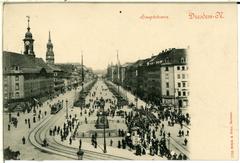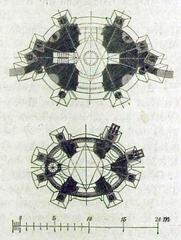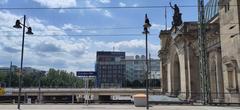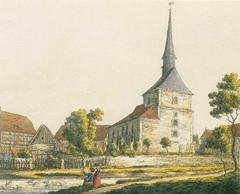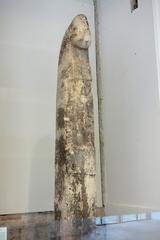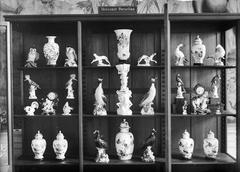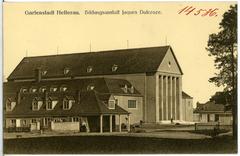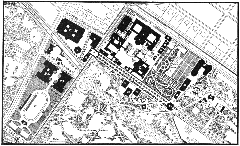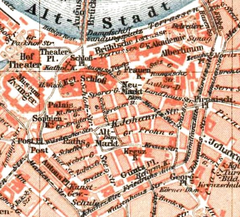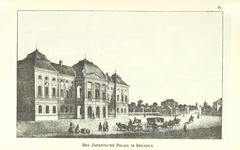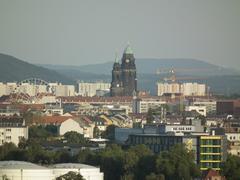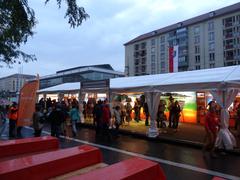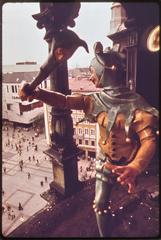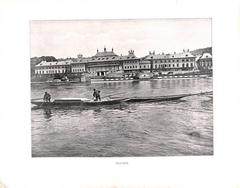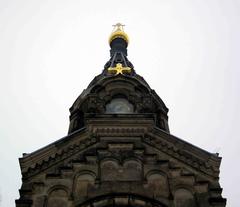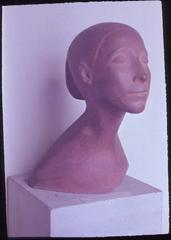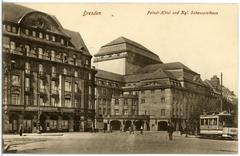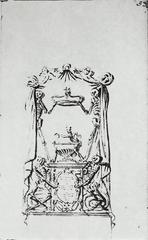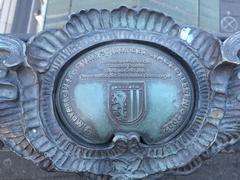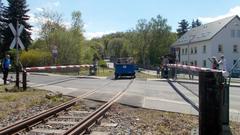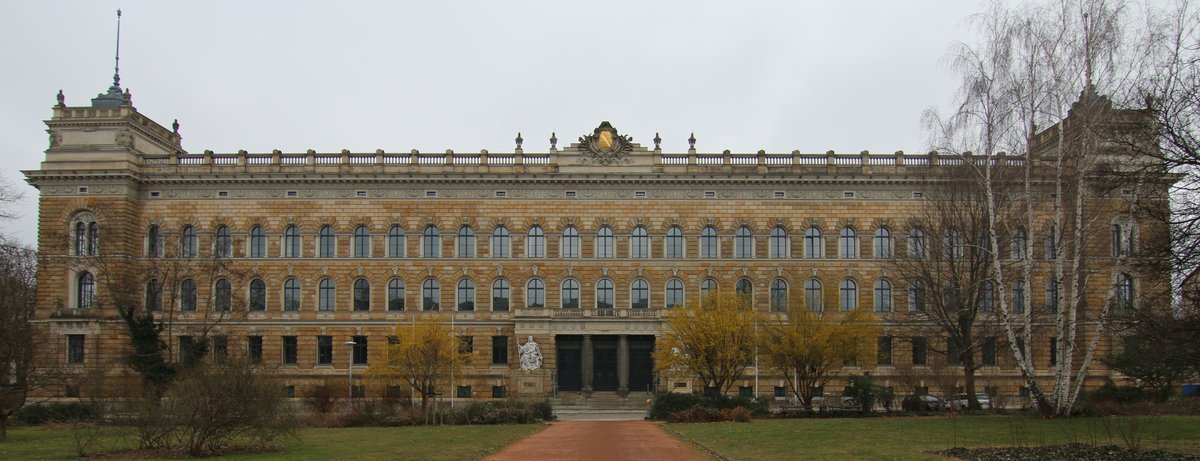
District Court Dresden: Visiting Hours, Tickets, and Guide to Historical Sites in Dresden
Date: 15/06/2025
Introduction
The District Court Dresden (Landgericht Dresden) is a landmark that embodies the city’s vibrant legal history, architectural beauty, and the memory of political upheaval in Saxony. Set in Dresden’s historic Altstadt, the court is both a functioning judicial institution and a site of remembrance, bearing witness to centuries of legal evolution, war, and reconciliation. This guide is tailored for history enthusiasts, architecture admirers, legal scholars, and curious travelers. It provides comprehensive information on visiting the District Court Dresden and its associated sites—including the Münchner Platz Memorial—along with practical tips to enrich your Dresden experience.
For more details, consult the District Court Dresden Guide and learn about the Münchner Platz Memorial at the Saxon Memorials Foundation.
Contents
- Early Foundations and Judicial Role in Saxony
- Architectural and Urban Context
- The Court During the Nazi Era and World War II
- Postwar Transformation and the GDR Era
- Reunification and Modern Era
- Memorialization and Cultural Significance
- Visiting the District Court Dresden and Münchner Platz Memorial
- Visiting Hours
- Tickets and Entry
- How to Get There
- Accessibility
- Nearby Attractions
- Visual and Media Resources
- Frequently Asked Questions (FAQ)
- Frauenkirche Dresden: Hours, Tickets, and Visitor Guide
- Summary and Next Steps
- Sources and Further Reading
Early Foundations and Judicial Role in Saxony
The District Court Dresden’s roots trace back to the late 19th century, during the wave of legal modernization following Germany’s unification. The Higher Regional Court of Dresden (Oberlandesgericht Dresden), established in 1879, replaced earlier courts and underscored Dresden’s rising prominence as Saxony’s capital. The Landgericht Dresden has since been central in handling civil and criminal cases, securing its role as a judicial pillar in the region.
Architectural and Urban Context
The original Landgerichtsgebäude on Pillnitzer Straße represented the authority of the judiciary with its Historicist design—melding Neo-Renaissance and Neo-Baroque elements. Part of a cityscape featuring grand public buildings, the court contributed to Dresden’s reputation for monumental architecture. Although the original building was destroyed in 1945, careful restoration and urban integration have preserved its legacy. The current District Court stands as a testament to Dresden’s architectural resilience, blending historic facades with modern functionality.
The court’s location in the Altstadt means it’s surrounded by significant Dresden landmarks, such as the Royal Palace, Semperoper, and Zwinger Palace (dresden.de, happyfrogtravels.com).
The Court During the Nazi Era and World War II
The court complex at Münchner Platz became infamous during the Nazi period as a site for political trials and executions. The facility, opened in 1907 as a royal court and remand prison, was utilized for politically motivated prosecution both during Nazi rule and the Soviet occupation. The destruction of the Pillnitzer Straße court building in the Allied bombing of 1945 marked a turning point, and the legacy of repression is now memorialized at Münchner Platz.
Postwar Transformation and the GDR Era
After WWII, Dresden fell under Soviet control and, subsequently, the GDR regime. The Higher Regional Court was dissolved in 1952, centralizing judicial authority. Münchner Platz continued to serve for political trials until its transfer to TU Dresden in 1957. By 1959, the site housed an Anti-Fascist Memorial and Museum, beginning its transformation into a place of remembrance and education.
Reunification and Modern Era
German reunification in 1990 brought the re-establishment of the Higher Regional Court in 1993, reaffirming Dresden’s legal status. Modern adaptations, including the creation of the Security Group of Judicial Sergeants in 2019, have ensured the court’s relevance and safety in contemporary Saxony.
Memorialization and Cultural Significance
The Münchner Platz Memorial, established in 2012 by the Saxon Memorials Foundation, commemorates victims of political persecution between 1933 and 1957. Exhibitions and educational programs at the memorial offer profound insights into the intersection of law, justice, and state power in 20th-century Germany. The site’s transformation into a memorial and university facility exemplifies Dresden’s commitment to confronting its past.
Visiting the District Court Dresden and Münchner Platz Memorial
Visiting Hours
- District Court Dresden: Monday to Friday, 8:00 AM – 4:00 PM; closed weekends and public holidays.
- Münchner Platz Memorial: Tuesday to Sunday, 10:00 AM – 5:00 PM; closed Mondays and public holidays.
Tickets and Entry
- District Court: Entry to public areas is free. Guided tours may require prior arrangement and sometimes a fee.
- Münchner Platz Memorial: Admission is free. Guided tours are available by appointment and highly recommended.
How to Get There
- Both sites are accessible by public transport.
- Tram lines 3 and 7 stop at Münchner Platz, a short walk from the memorial.
- The District Court is within walking distance of major Altstadt attractions and transit hubs.
Accessibility
- Both the court and memorial are wheelchair accessible, with ramps and elevators.
- Visitors needing special assistance should contact the respective site in advance.
Nearby Attractions
- Zwinger Palace: Baroque architecture and renowned museums.
- Frauenkirche: Iconic rebuilt church and symbol of reconciliation.
- Semperoper: World-famous opera house.
- Dresden Castle: Art museums and historic collections.
- Brühl’s Terrace: City views over the Elbe River.
Visual and Media Resources
The memorial and court websites offer virtual tours, historic photographs, and personal testimonies. These resources enrich both pre-visit planning and post-visit reflection (dresden.de, Saxon Memorials Foundation).
Frequently Asked Questions (FAQ)
Q: What are the visiting hours for the District Court and Münchner Platz Memorial?
A: District Court: Mon–Fri, 8:00 AM–4:00 PM. Memorial: Tue–Sun, 10:00 AM–5:00 PM.
Q: Is there an entry fee?
A: No, both sites are free. Guided tours may require booking and a fee.
Q: Are guided tours available?
A: Yes, by prior arrangement at both sites.
Q: Is the court/memorial accessible for visitors with disabilities?
A: Yes, both are barrier-free with ramps and elevators.
Q: Can I attend court hearings or take photos?
A: Public hearings may be attended subject to schedule and security. Photography inside is restricted, especially during proceedings.
Frauenkirche Dresden: Visiting Hours, Tickets, and Historical Significance
History and Significance
The Frauenkirche Dresden, completed in 1743 and rebuilt after WWII, is a symbol of resilience and reconciliation in Dresden. Its Baroque dome dominates the skyline and its reconstruction (completed in 2005) utilized original plans and materials, making it an emblem of peace and historical continuity.
Visitor Information
- Hours: Mon–Sat, 10:00 AM–6:00 PM; Sun and holidays, 12:00 PM–6:00 PM. Check the official website for updates during special events.
- Admission: Free entry; donations welcome. Guided tours and audio guides are available for a fee.
- Accessibility: Fully wheelchair accessible. Contact ahead for assistance.
- Photography: Allowed for personal use, but flash and tripods are restricted during services.
- Nearby: Dresden Castle, Zwinger Palace, Brühl’s Terrace.
Travel Tips
- Arrive early to avoid crowds.
- Combine your visit with other Altstadt sites.
- Use trams and buses for easy access.
Summary and Next Steps
The District Court Dresden exemplifies the interplay of law, architecture, and memory in the heart of Saxony. Its historical role, architectural splendor, and proximity to Dresden’s most iconic sites make it an essential stop for any visitor. The Münchner Platz Memorial offers a space for reflection on political repression and the ongoing importance of justice.
Whether you explore through guided tours, educational programs, or self-guided visits, the District Court Dresden and its surroundings offer a profound journey into Germany’s legal and cultural heritage. To maximize your visit, use digital tools like the Audiala app, consult official resources, and immerse yourself in the vibrant tapestry of Dresden’s history.
For up-to-date information, consult Dresden Tourism, the District Court Dresden Guide, and the Frauenkirche Dresden website.
Sources and Further Reading
- District Court Dresden: Visiting Hours, Tickets, and Historical Significance, 2025
- Visiting the District Court Dresden: Hours, Tours, and Architectural Highlights, 2025
- Frauenkirche Dresden: Visiting Hours, Tickets, and Historical Significance, 2025
- Cultural Context and Visiting Information for the District Court Dresden, 2025
- Dresden Tourism Official Website, 2025
- Saxon Memorials Foundation, 2025


